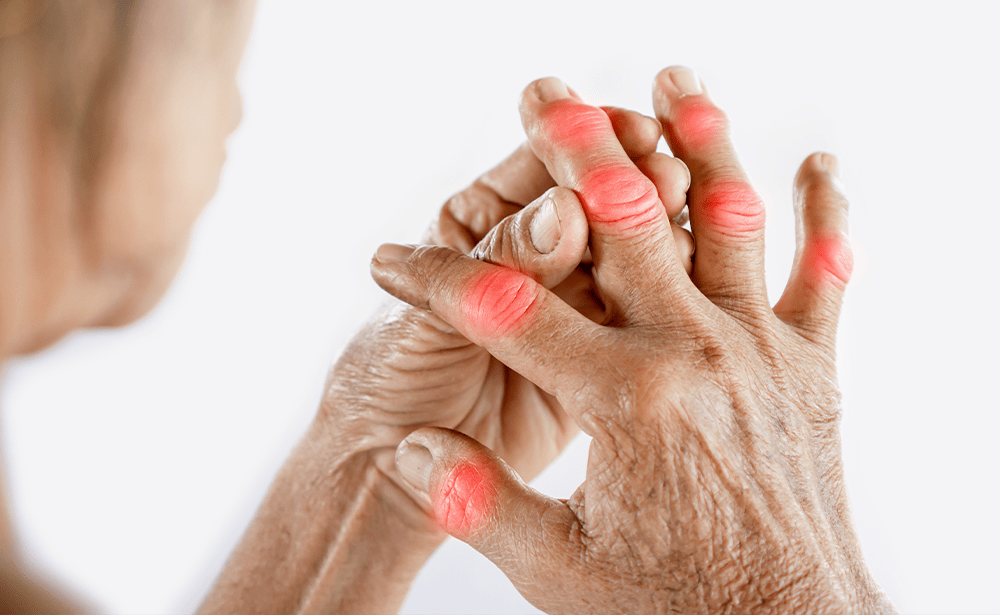Multiple Methods of Treating Arthritis That Provide Pain Relief and Improve Mobility
Arthritis, a condition characterized by joint inflammation and pain, affects millions of people worldwide. According to the Centers for Disease Control and Prevention (CDC), approximately 24% of adults living in the U.S. are afflicted by a variation of this disease. It also happens to be one of the most common workplace disability claims.
Although arthritis is a chronic condition with no cure, effective management can significantly improve the quality of life for those living with the condition. In this blog, we’ll explore a comprehensive approach to arthritis pain management and symptom relief, including at-home methods, over-the-counter remedies, and treatments provided by orthopedic doctors and surgeons.
Understanding Arthritis and Its Effects
Before covering the many ways of treating arthritis, it’s important to gain an understanding of what it is. There are more than 100 forms of arthritis, including osteoarthritis (OA), rheumatoid arthritis (RA), fibromyalgia, and gout.
The most common forms of arthritis cause joint pain, stiffness, and inflammation, but their underlying causes and progression differ. Managing arthritis requires a tailored approach based on the specific type of arthritis and its severity. Orthopedic physicians are typically the most equipped when treating arthritis because of their vast experience in helping patients with pain management in their joints.
At-Home and Over-the-Counter Methods for Arthritis Pain Management
For mild to moderate cases of arthritis, there are numerous methods individuals can use for pain relief, increased mobility, and reduced inflammation, including:
- Nonsteroidal anti-inflammatory drugs (NSAIDs) such as ibuprofen and naproxen.
- Topical treatments that contain pain-relieving ingredients like capsaicin or menthol.
- Salicylates that contain pain-relievers and anti-inflammatories.
- Heat/ice pack therapy.
- Mobility aids such as canes and braces.
- Orthotics for varieties of arthritis occurring in the feet, knees, and hips.
Lifestyle Modifications That Help with Arthritis Pain Management
Some varieties of arthritis require the individual to make lifestyle modifications for the sake of mitigating their symptoms. The benefit of getting examined by an orthopedic physician is they can tell you which lifestyle modifications are most appropriate for your situation. Some of the most common recommendations include:
- Making dietary changes to reduce intake of foods that cause inflammation.
- Getting on a weight management plan that will reduce the pressure on knees and hips.
- Starting a low-impact exercise regimen that will increase strength and improve joint mobility. Yoga, tai chi, and aquatic-based exercises are popular choices.
- Getting regular massages that target the affected joints and muscles.
Orthopedic Arthritis Treatments
Many people who are afflicted with arthritis reach a point where at-home methods and over-the-counter treatments cease to provide pain relief. This is usually when they seek out the assistance of an orthopedic doctor or their primary physician.
However, in cases of arthritis, it’s best to see a doctor as early as possible. Orthopedic physicians have the resources to inform patients what type of arthritis they have, how advanced it is, and what the best methods are to slow its progression.
The following are some of the most common orthopedic treatments:
- Prescription pain medication and anti-inflammatories
- Disease-modifying antirheumatic drugs (DMARDs) that slow joint damage with RA patients
- Corticosteroid injections
- Hyaluronic acid injections
- Physical therapy
As a last resort, your orthopedic doctor may recommend arthritis surgery, which is typically used to address severe joint damage. Using a specialized fusion technique, orthopedic surgeons can restore function and mobility to affected joints. In severe cases, orthopedic surgeons may recommend total joint replacement surgery, such as hip or knee replacement, to alleviate pain and restore joint function.
How Treating Arthritis Enhances Quality of Life
Due to the chronic nature of the condition, getting an early jump on treating arthritis is extremely beneficial to patients in the long-term. Although there is no known cure for the condition, an orthopedic doctor can help mitigate many of the core symptoms and help improve the patient’s quality of life.
Patients can expect the following when working with an orthopedic doctor:
- Reduced pain levels
- Improved mobility
- Enhanced emotional well-being
- Joint damage prevention
- Overall health promotion
Managing arthritis involves a multi-faceted approach that combines at-home methods, over-the-counter treatments, and interventions provided by orthopedic doctors. By tailoring these strategies to the specific type and severity of arthritis, individuals will enjoy higher quality of life.
If you have arthritis or believe you are demonstrating the early symptoms of it, the best thing to do is consult with an orthopedic doctor. During your first appointment, they will collect your medical background, examine the affected area, and potentially run some tests, like an X-ray or MRI.
After providing a diagnosis, your orthopedic doctor will provide a treatment plan that’s tailored specifically to you and your variety of arthritis. Additionally, this treatment will focus on providing pain relief and increasing your mobility.
Call us at (316) 630-9300 to speak with our scheduling department about booking your initial consultation. Mid-America Orthopedics can typically schedule same-day and next-day appointments.

